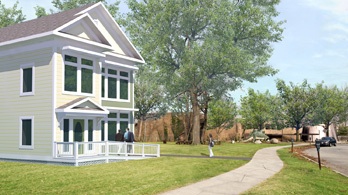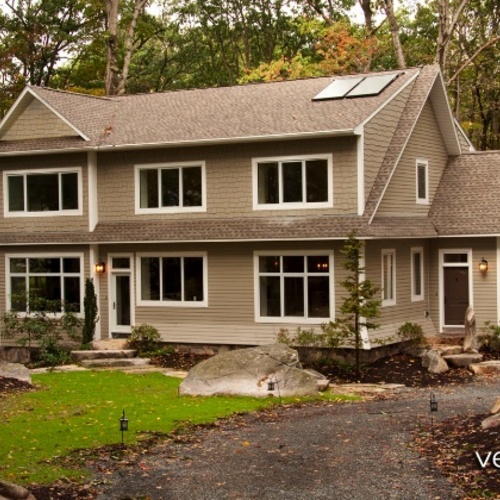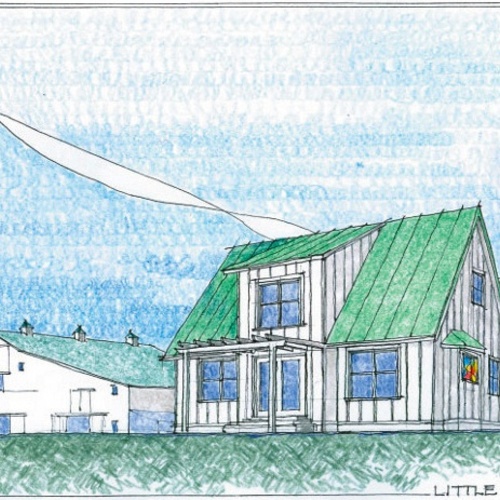Image Credit: All images copyright Doty & Miller Architects
Image Credit: All images copyright Doty & Miller Architects The Passivhaus building at the Cleveland Museum of Natural History will be two stories and about 2,500 sq. ft., with three bedrooms and two and a half baths. The second-floor ceiling is designed to provide at least R-75 thermal resistance. Structural insulated panels will be used for the exterior walls.
It remains to be seen which part of the exhibit “Climate Change: The Threat to Life and a New Energy Future” will make the bigger impression on visitors to the Cleveland Museum of Natural History: its exploration of changes to the earth’s oceans, ice sheets, land mass, weather patterns, and atmosphere, or the accompanying 2,500-sq.-ft. house that will be built to the Passivhaus standard on the museum grounds.
More likely than not, “Climate Change,” a touring exhibit scheduled for display at the museum from July 23 through December 31, will leave many people thinking seriously about ways we can improve stewardship of the earth. But many of those same people also might be so impressed with the comfort, quiet, and performance of the Passivhaus home – which will be on display from June through September – they’ll never again be satisfied with a home built to code.
That, at least, was one of the reasons for including the Passivhaus standard prominently in the display, said Evalyn Gates, the museum’s director.
“I want to bring something in that really gets people’s attention and gets them thinking differently,” Gates told the Cleveland Plain Dealer.
“If we could go to scale with this our dream would be that it creates an employment base for people,” added Chuck Miller, a partner at Doty & Miller Architects, which designed the house, known as SmartHome Cleveland.
SmartHome’s journey
Gates asked that the house be designed to fit in architecturally with homes in some of the city’s older communities, and Doty & Miller complied. Functionally, though, the plan is to incorporate all of the insulation, airtightness, HVAC requirements, and, when the house is moved to its permanent location after September, siting strategies needed to aim for certification by Passive House Institute U.S.
The exterior wall system of the two-story three-bedroom house will feature structural insulated panels and provide, at a minimum, thermal resistance of R-55, according to the Doty & Miller detail drawings shown above. The second-floor ceiling will be insulated at least to R-75.
The Plain Dealer notes that the house will be relocated to a neighborhood known as University Circle, in northeast Cleveland, where it will be sold for between $300,000 and $400,000 – a substantial discount from the expected $525,000 cost of the project, which was funded in part by a $40,000 grant from the Cleveland Foundation, a museum-program investment of $250,000 that will be recovered upon the sale of the house, and a number of sponsors.
Meanwhile, “Climate Change,” which was organized by the American Museum of Natural History in collaboration with the Cleveland museum and several partners, will continue touring after it closes in Cleveland. The exhibit first opened at the American Museum of Natural History, in New York City, in October 2008.
Weekly Newsletter
Get building science and energy efficiency advice, plus special offers, in your inbox.
















One Comment
Spray foam in ceiling
Looks like a great idea for a project. I think you should read this article by GBA's Alex Wilson. You might re-think using spray foam due to its enormous global warming effects.
https://www.greenbuildingadvisor.com/blogs/dept/energy-solutions/avoiding-global-warming-impact-insulation
Log in or create an account to post a comment.
Sign up Log in